Parabolic Line Art of Book Parabolic Line Design of a Cube
We adore math art projects. I've been eyeing the thought of using parabolic curves in a creative endeavor with my math-loving kid for a while. I was experimenting in my own fine art periodical with the peachy manner you can fool the eye into thinking a group of straight lines is actually a curve when my 10 year former leaned over and said, "That is so absurd!!"
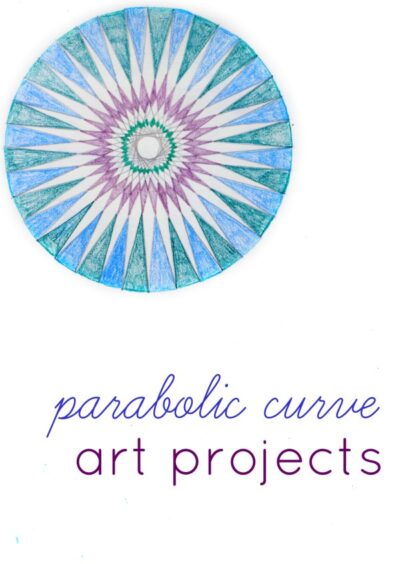
That'southward when I knew I had a keen math art action for us to do together. Since my sons are naturally drawn to S.T.E.M. - themed activities, I practise attempt and detect ways to sneak in the "A" to get in S.T.E.A.One thousand., in which the "A" stands for Art and Design. Terminal week I shared our Fibonacci Art Project, and similar that lesson, our exploration of parabolic curves is just that: a process-based exploration.
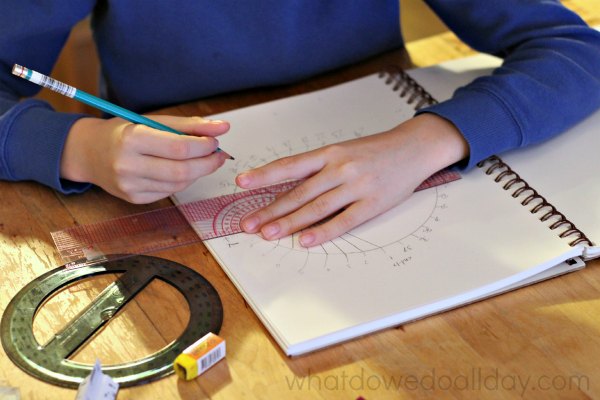
I'll give you the basic instructions for how to make parabolic curves and then allow you lot and your kids explore math art on your own! (Notation: this post contains affiliate links)
What you need:
- Pencil (believe me, yous do not want to start with ink!)
- Eraser (see above!)
- Pens. We've switched from Sharpies to Flair pens. You only take to odour them to find out why.
- Rulers or straight edges. Information technology'south easier to create squares if you have a triangle or t-square. I think information technology's well worth having a math set. They aren't very expensive and they are loads of fun, not to mention being handy for school projects.
- Protractor. Optional, but a must if you want to exercise a circle design. We get a lot of utilise from our 360 degrees protractor
- Newspaper. We fabricated ours in our fine art journal. The mixed media visual art journal is our absolute favorite, which regular readers (waving hi!) know that I frequently sing the praises of. Alternatively, you lot can use graph paper.
- Sharpener. You desire sharp, precipitous pencils for this project!
- Colored pencils. Optional, simply fun.
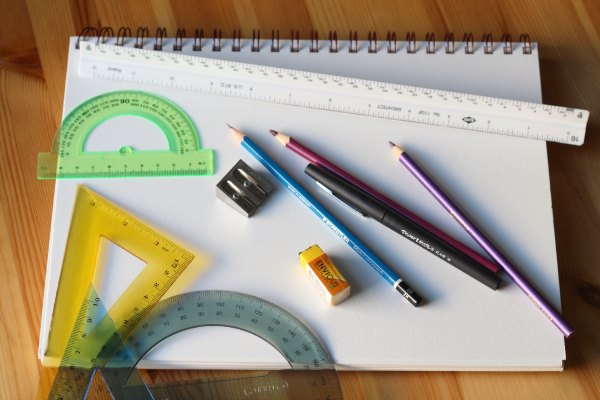
Instructions:
one. Create a set of crossed lines, preferably at a 90 degree bending. (Kids can experiment with different angles one time they've learned the nuts.) For ease, make sure each line is an even measurement. We used one cm and 5mm increments
2. Divide the lines into equal divisions. In my instance I've uses v millimeter increments.
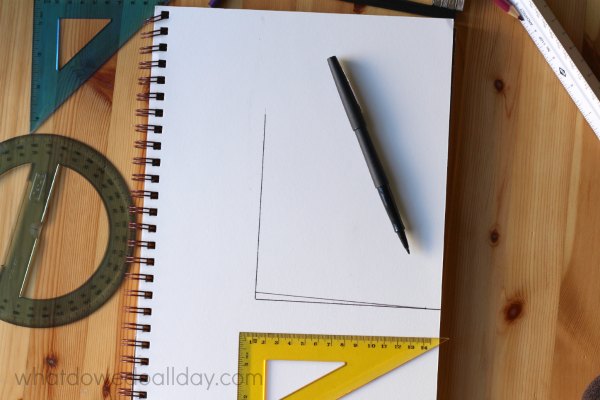
3. Draw angled lines. Start on the bottom line in the left hand corner at the furthest mark. (See photo in a higher place.) Depict a line from the mark to the first mark on the adjacent line. Draw a second line from the second furthest mark and connect it to the 2nd mark on the adjacent line. (Meet photo beneath.)
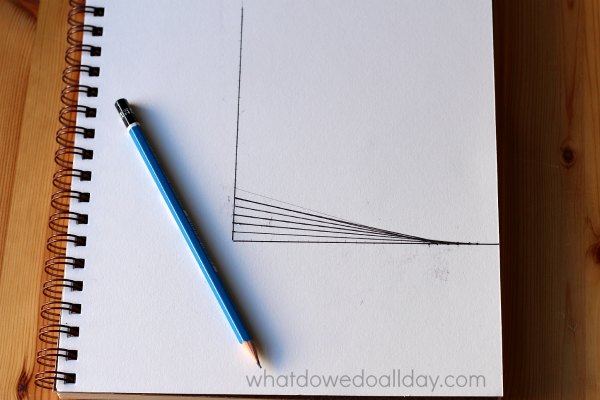
four. Go on until all the lines accept been fatigued.
TIP: The starting/ending points of the first and last few lines can become "lost". To brand it easier, number the marks. (See photo below)
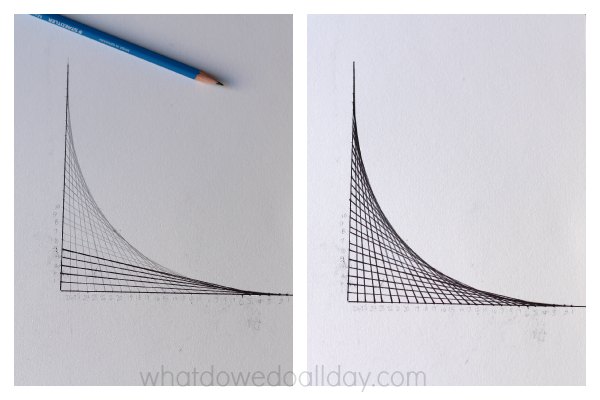
Voila! A "curved" line appears.
v. Optional: go over pencil lines with marker and/or employ colored pencils to create colorful designs.
TIP: For kids just starting out, dissever the lines with wider marks. My example in a higher place is 5 mm, but Kiddo preferred to work with ane cm sections.
Variations:
1. A unmarried parabolic bend, while cool, is just the commencement. Encourage your kids to create boxes, triangles, and interlocking shapes every bit a basis to create elaborate math art designs!
2. Connect the dots in a circumvolve! My son created a "parabolic eyeball".
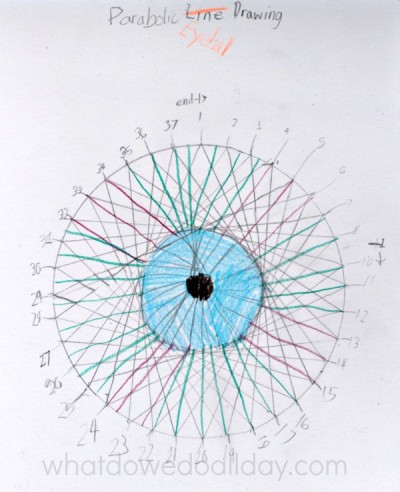
For inspiration, hither are some of our experiments, straight from our art journals. (Yous tin can run into I need to work on my photograph editing skills, ha ha ha.)
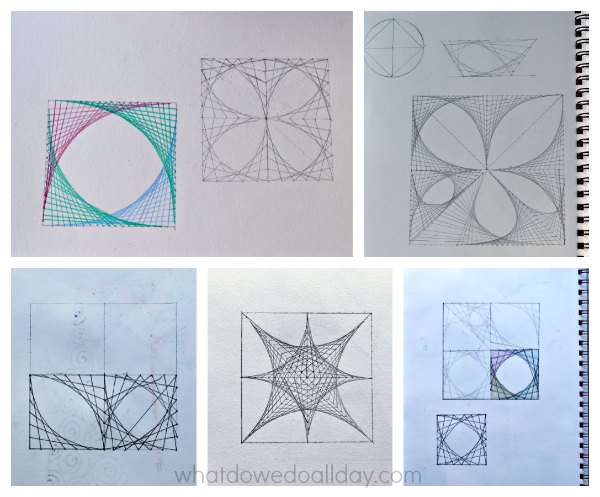
Watch more than of our math fine art ideas in action:
MORE: Tessellations and the Pi Skyline are two of our favorite math drawing projects. Footling kids tin do connecting the dots, too, with a giant dot to dot. Or check out more fantastic patterns in these math fine art books.
0 Response to "Parabolic Line Art of Book Parabolic Line Design of a Cube"
Post a Comment